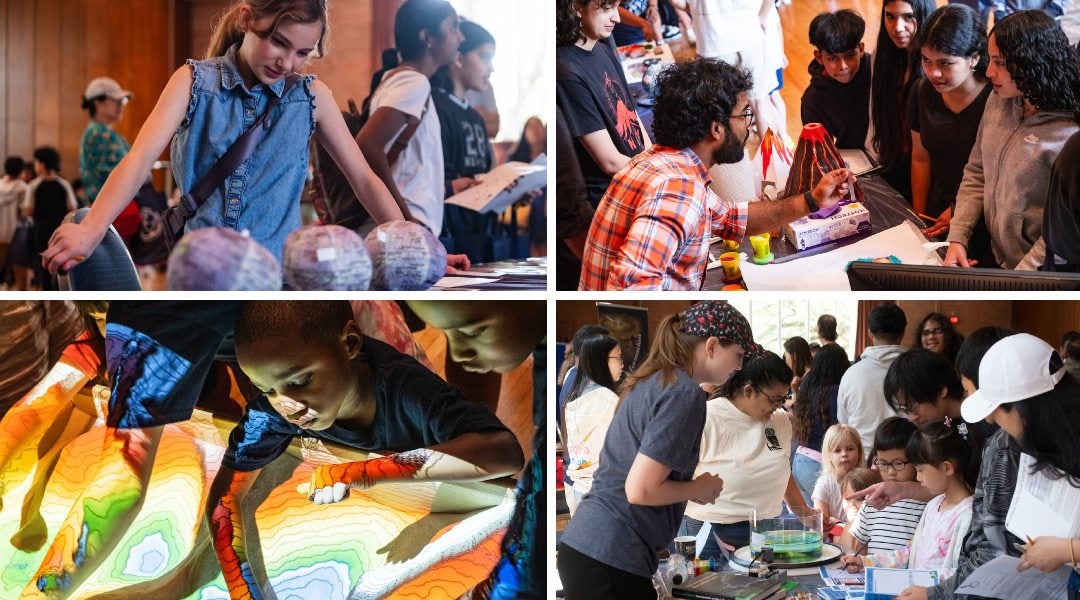Nearly 1,000 Earth and planetary explorers from the greater Houston area attended Rice University’s K-12 Earth and planetary open house at Rice Memorial Center’s Grand Hall May 3. The event was held by the Department of Earth, Environmental and Planetary Sciences (EEPS), the Rice Space Institute’s Center for Planetary Origins to Habitability (CPO2H) and the Office of STEM Engagement (R-STEM) in partnership with Houston Independent School District and NASA.
“This first-of-its-kind event brought together almost the entire cross section of science disciplines from Rice’s Earth and planetary sciences for the education of K-12 students of the Houston area,” said Rajdeep Dasgupta, the Maurice Ewing Professor of Earth Systems Science and the director of CPO2H. “We plan to build on the success of this event as a key means to facilitate workforce development in Earth and space sciences by giving the K-12 students an early taste of exploration of the natural world. At the same time, the Rice students are also getting the opportunity and support to bring the passion and excitement of their science to the younger students and to the community.”
Guests were drawn to a few signature stations. They learned about the surface of Mars with rovers and a virtual reality sandbox. Two discovery domes provided immersive, planetarium-style experiences on a range of topics from Earth’s auroras to comet, meteor and asteroid impacts.
In total, more than 20 groups set up a myriad of other curiosity-piquing stations to provide dynamic activities grouped among the following themes: formation of the solar system and planets; planetary interiors and Earth’s subsurface; and surface, ocean, atmosphere and climate.
EEPS faculty and graduate students and CPO2H scientists were available to share science concepts through multimedia presentations, demonstrations and hands-on activities.

Lanh Le, a teacher in HISD’s Ortiz Middle School, described her experience and its positive influence on youth.
“The earlier you expose children to STEM, the earlier they fall in love with science, technology, engineering and math,” she said.
Le brought her international baccalaureate class to further explore the broad offerings of STEM learning. “I incorporate STEM into my lessons all the time, especially in their projects,” she said. “If they can get exposed faster and earlier, they’re more prone to do more things in the STEM fields as adults.”
While her students are only in seventh grade, events like the K-12 Earth and planetary open house have sparked an interest in their futures.
“My students are in love with STEM right now, and they’re already talking about applying to Rice,” Le said.
The event is one of the several activities supported by grants to HISD and Rice from NASA geared to expose Houston area K-12 students and teachers in Earth, planetary and space sciences.
“We would like to extend a big thank you to Lizzie Fletcher, representing Texas’ 7th Congressional District, for her support of this community-funded project,” said Carolyn Nichol, associate research professor in chemistry, executive director of R-STEM and education director for the NanoSystems Engineering Research Center for NanoEnabled Water Treatment.
Dasgupta is the principal investigator and Nichol the co-principal investigator on the project.

